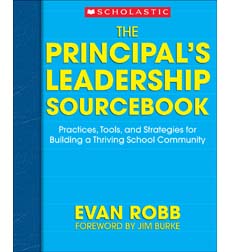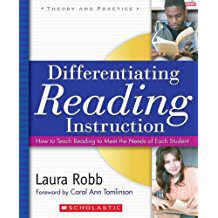The Goal of Phonics Instruction is to Get Readers Not to Use Phonics When Reading
Timothy Rasinski, Ph.D.
For many of you, the title of this blog entry may sound a bit nonsensical — Why teach something and then not use it? But let me ask you to think a bit more deeply about phonics. If you are reading this you are likely a proficient reader. When reading how often do you have to stop and analyze or “sound out” individual words? My guess is that more than 99.9% of the words you encounter in reading are not analyzed or “sounded.” Most words we encounter as proficient readers are sight words – they are recognized instantly and near effortlessly. Phonics is hardly used at all when proficient readers read.
We need phonics and other word analysis skills in order to get words into our heads. But after a few encounters with analyzing specific words, those words become “imprinted” in our brains as sight words. We need phonics to get words into our internal lexicons. But once those words are automatized or made into sight words phonics is no longer needed.
Getting words to the point of automatization is critical to proficient reading. The problem in reading is that all of us have a limited or finite amount of attention or cognitive energy. Analyzing words, as is done in phonics, uses up a lot of that cognitive energy. And that energy that is applied to word analysis cannot be applied to the more important part of reading – comprehension. So what often happens are readers who can read all the words correctly, but because they are spending their precious cognitive resources on word analysis their comprehension falters.
Carol Chomsky noted this phenomenon in her 1976 classic article entitled “After decoding: What?” Working with struggling readers, she taught them to decode words. However, despite the fact that they were able to decode words accurately, “albeit slowly and painfully (p. 288),” they continued to struggle with reading comprehension and general proficiency in reading. The answer to her question of “What?” was helping students develop automaticity or fluency in their reading. She did this by having students read interesting and challenging materials while simultaneously listening to an audio-recorded version of the text. In a 15 week intervention period (less than four months), her students made approximately 8 months progress in reading!
Phonics is important, no question about it. It is a tool that readers use to get words into their internal lexicons. However, proficiency in phonics should not be the goal. Rather the goal should be to get students to the point where most of the words they encounter are automatically recognized so that their attention can be devoted to making meaning.
The way to get young readers to the point of automatic word recognition is the same way a person develops automaticity in any activity – practice. However, the practice needs to be the kind that allows children to move to proficient reading. Two of the best ways of providing proficient practice is through assisted reading and repeated reading.
Assisted reading is what Carol Chomsky used with her students. Students read texts while simultaneously listening to a fluent reading of the text. This can occur by reading with a more proficient partner, reading with a group of others, or reading while listening to a recorded version of the text. In all of these situations, the assist of another reader provides students with a scaffold that allows them to approach fluent reading on their own.
Repeated reading simply involves reading a text multiple times until a student can read it at a level that approaches proficiency. When students who struggle in reading read a text, the initial reading is not proficient. However, when they read it a second, third, and perhaps even a fourth time their proficiency improves until they are able to read it much like a proficient reader. The “magic” behind both assisted and repeated reading is that the improvement that comes from reading one text with assistance and/or repeatedly transfers to new texts that students have not previously read. In essence, students begin to pull their reading up by their bootstraps.
While I don’t want to get overly technical in this blog, I do want to mention that, in this age of scientifically based reading instruction, a good deal of research supports both assisted and repeated reading, especially with students who find reading difficult. In a recent review of research related to fluency interventions Stevens, Walker, and Vaughn (2017) conclude that “Results showed repeated reading,… and assisted reading with audiobooks produced gains in reading fluency and comprehension” (p. 576). My own research on the Fluency Development Lesson (Rasinski, 2010), a lesson that integrates assisted and repeated reading consistently results in improved performance in word recognition automaticity and comprehension.
While it is critical that we provide students with solid instruction in phonics or word decoding, it is equally important that we keep in mind that we need to take students to that next level word reading—fluent, automatic, and proficient reading.
References
Chomsky, C. (1976). After decoding: What? Language Arts, 53, 288-296.
Rasinski, T. V. (2010). The fluent reader: Oral and silent reading strategies for building word recognition, fluency, and comprehension (2nd edition). New York: Scholastic.
Stevens, E., Walker, M., & Vaughn, S. (2017). The effects of fluency interventions on the reading fluency and reading comprehension performance of elementary students with learning disabilities: A Synthesis of the research from 2001-2014. Journal of Learning Disabilities, 50, 576-590.
You can find resources for teaching accurate and automatic word recognition (i.e. fluency) at Tim’s own website – www.timrasinski.com
Daily Word Ladders by Timothy Rasinski
Follow Tim on Twitter @TimRasinski1
![]()











